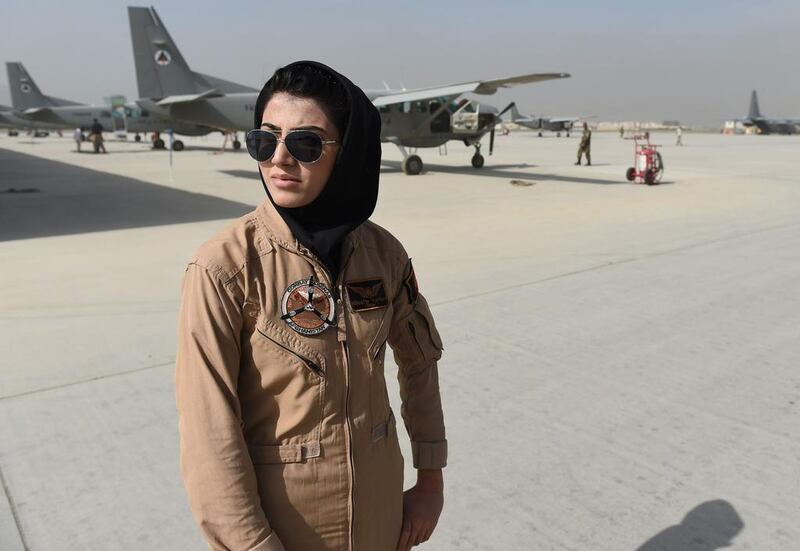Afghanistan’s first-ever female airline pilot, who was lauded as a mark of progress in the battle for progress on women’s rights there, has been accepted for asylum in the United States.
Niloofar Rahmani travelled to the US in 2015 to receive training. She said she and her family were facing threats from the Taliban, the militant group that has waged a decades-long war against the Afghan government.
The US paid for her travel and her training. Now, Washington says it remains too dangerous for her to return to her home country.
She applied for asylum in 2016, but only received the news on Monday, the same day that a twin suicide bombing claimed by ISIS killed at least 26 people, including nine journalists.
"I'm really happy and thankful to all the people who made this happen," she told The Wall Street Journal. "All I want now is to go back to my dream of flying".
“I can finally live my life in peace,” she said.
She had attained celebrity status at home when she became a captain in the Afghan military after she finished her pilot training in 2013. Ms Rahmani was just 18-years-old when she signed up for the Afghan military.
The NATO coalition in the country pointed to Ms Rahmani as an example of what women could achieve under the government they were backed in Kabul.
But as her fame grew, so did the death threats as her rising platform clashed with local culture. Her immediate family had to flee into hiding as they faced reprisals for supporting her position as a pilot.
One letter was allegedly signed by The Taliban that warned her: “if you carry on doing your job, you will be responsible for the destruction of your family”.
After Ms Rahmani became a pilot, her brother was targeted in a hit-and-run and came under fire, while her sister was forced to divorce her husband and was cut off from seeing her child.
Even her own extended family members, particularly her uncles and cousins, considered her to be a bearer of shame on the family. Her family remain in Afghanistan.
________________
Read more:
ISIS killed 10 of my colleagues today: Afghanistan reporter recounts bombing in Kabul
Taliban suicide bomber kills six in Helmand as spring offensive begins
Afghanistan launches leaflet drop to boost lacklustre voter registration
________________
Following her decision to flee the country, she remains concerned about the risks her remaining family face back home.
“Now all my worries are about my family in Afghanistan”, she said.
In 2015, Ms Rahmani received the US department of State’s International Women of Courage award.
Her experiences unveiled how Afghanistan’s conservative society limits the progression of women.
The security situation in Afghanistan has deteriorated to the point that a US watchdog warned this week of a serious reduction in the number of security forces operating in the country.
There are just under 30,000 forces in war-torn Afghanistan as of January 31, according to the Special Inspector General for Afghanistan Reconstruction (SIGAR).
Both ISIS and the Taliban control more than 14.5 per cent of the country, the highest since SIGAR began recording data three years ago.
On Monday a co-ordinated double suicide bombing claimed by ISIS killed at least 25 people in central Kabul, including nine journalists.
Afghan security officials confirmed the causality tool as 25 killed and 45 wounded. Officials say the bombing targeted a NATO convoy and killed 11 children at school located near to where the explosion took place.
Last month, the Taliban announced its annual spring offensive, disregarding the peace offer of President Ashraf Ghani for the group to be recognised politically if it renounced violence.






